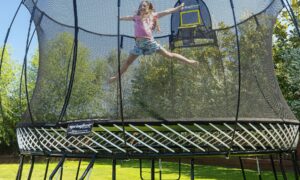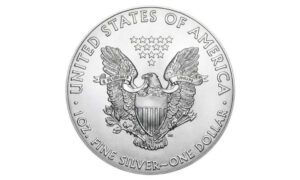Trampolines come in a range of forms and sizes, but the benefits are the same. Large outdoor trampolines with safety nets are available for children to play on at parks and schools across the country.
There are, however, smaller, portable variations that can be used indoors or outdoors for exercise or recreation. They are available from a variety of manufacturers, are popular among children for recreation, and benefit adults.
They give an efficient kind of aerobic exercise that improves heart health, boosts metabolism, and burns calories swiftly while having fun.
Trampolines are also fun for both children and adults; they can be used at home or acquired as part of a recreational facility. When purchasing a trampoline, consider the advantages it will provide. Here is a list of trampoline benefits you can expect:
The Most Powerful Weight Loss and Fitness Method
Everyone knows trampolines are enjoyable, but did you realize they may also be beneficial to your health? Continue reading to find out how. There are numerous advantages to exercising, and the benefits can last a lifetime.
However, with work, family, and school, it can be difficult to find the time to exercise. However, with trampolines widely available in many households, this could be the solution to your troubles!
Keeping active is essential for good health, but finding time to exercise when you’re busy or have a tight schedule can be challenging. Exercisers who exercise on a regular basis are happier and healthier, according to research.
When you exercise in a fun, enjoyable, and enjoyable atmosphere, you love doing it on a regular basis, and you are more likely to stick with your workouts. This increases your chances of success in staying active!
Improves Circulation
All physical exercises assist the human body in different ways. Running, walking, and aerobics can all aid in weight loss. Football and basketball promote hand-eye coordination, while swimming is beneficial to the lungs and cardiovascular system.
Every sport has benefits, but if you want to exercise your circulatory system, you need do three things: walk regularly, run outside, and use a rebounder.
According to a Heart Monitor Magazine article, frequent exercise is vital for keeping your heart healthy. According to the report, at least 30 minutes of cardio activity per day is helpful to your cardiovascular system.
Muscle Strengthening
Jumping on a trampoline is more useful than most people know when it comes to exercising. Lifting weights at the gym isn’t the only way to acquire the body you desire; trampolines are an amazing way to increase muscle strength and burn calories quickly.
Trampoline workouts, in addition to being a fun way to remain in shape, strengthen the body and mind. The action engages all of the body’s muscles at the same time, increasing balance and coordination.
While there are many other types of trampolines on the market today, the one that produces the best results is a rebounder. Trampoline workouts not only help to build physical strength, but they also burn 1000 calories every hour.
Enhances Balance and Coordination
Stand on any size or shape trampoline (square, rectangle, or circle), spread your arms, and let go. You take off like a human spring. The main goal of this sport is to land softly and without damage.
How does using a trampoline aid in the improvement of balance and coordination? When you use a weight-bearing surface (for example, a trampoline), your body activates all of the muscles that support you, including those in your legs and arms.
This enhances coordination in response to changing situations, such as when running on a surface with holes or bumps. Trampolining can be utilized to improve cardiovascular fitness and leg strength.
The Metabolism Is Controlled
Metabolism, like everything else in life, must be carefully regulated. This is controlled by a variety of hormones. This article will go through the regulation of metabolism with trampolines, as well as a variety of other relevant issues.
Learn about two common weight-loss methods, as well as numerous more strategies to improve your everyday routine. The first thing you should know about trampolines and how they stimulate metabolism is that they have a lot of movements.
When you try to improve your metabolism with trampolines, you will be shocked at how much energy they can take out of you in such a short period of time.
Excellent Core Strength
You might be astonished to hear that a simple trampoline bounce is one of the best all-around core workouts available. You don’t have to do hundreds of sit-ups a day or lift weights at the gym, but just 15 minutes on an exercise trampoline will strengthen your abdominal muscles while also toning your shoulders, arms, and back.
The weight of your upper body through gravity strains both your abdominal wall and lower-back muscles as you bounce, which is why a trampoline workout is so good for your core muscles (your stomach area).
Excellent for Cardiovascular Exercise
Cardiovascular fitness is a concept that is gaining popularity in today’s society. This approach is intended to promote blood flow, cardiac function, lung capacity, and other health benefits.
Cardiovascular fitness can be obtained in a variety of ways, including working out at the gym or simply going for a walk around the block; however, recent research has revealed that trampolines can improve cardiovascular health.
Rebounding is the foundation of trampoline exercise. When a person jumps on a trampoline, the rubber pad’s rebound leads them to jump higher than usual. This repeated hopping allows the individual practicing it to breathe more deeply, increasing lung capacity.
Increases bone density
Jumping on trampolines can promote bone density in healthy children, in addition to strengthening muscles. Mini-trampolines have been demonstrated in studies to help build bone mass and prevent osteoporosis in youngsters who are at high risk of getting the disease later in life due to low bone density or a family history of the condition.
Bone density can be affected by a variety of factors, including age, gender, heredity, and calcium consumption. For example, boys attain their peak bone density between the ages of 12 and 16, whereas females reach their peak bone density between the ages of 12 and 16.



































